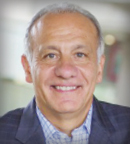Roswell Park comprehensive Cancer Center and the Bristol Myers Squibb Foundation announced a $3.3 million program to address the cancer burden in rural areas and Native Nations across New York State, with an emphasis on the Western New York region.
The grant from the Bristol Myers Squibb Foundation supports a service collaboration among Roswell Park, the Indian Health Service (IHS), and geographically matched rural federally qualified health centers across New York. It will allow Roswell Park to provide on-site and virtual patient navigation consisting of cancer prevention, screening, treatment, and education as well as available education on clinical trials, palliative care, and survivorship. The primary focus will be on breast cancer and prostate cancer and secondarily on co-occurring conditions that have high rates in these communities.
Benefits to the Community
Six full-time patient navigator positions in the high-need communities as well as two virtual navigator positions will be created through the grant. The funding will support:
- Mobilization of a network of patient navigators in collaboration with IHS health centers and adjacent federally qualified health centers that serve Native American and rural community members to provide a tailored program to improve screening and co-occurring disease management
- Administration of in-person, phone-based, and virtual Web-based navigation systems for tribal and federally qualified health center communities
- Work by patient navigators with health-care staff and participating clinics to provide education on breast and prostate cancers screening guidelines, cancer care continuum, and management of co-occurring conditions.
Following a Regional Tradition
The initiative has been designed to incorporate the Two Row Wampum philosophy, developed by the Haudenosaunee and based on the Two Row Wampum Belt and the Covenant Chain of Friendship. Historically, this Wampum agreement was used as a guideline between Native Americans and the Dutch, French, British, and Canadians. Like the Two Row Wampum, this patient navigation collaboration will provide a bridge between two health-delivery systems that are functioning in parallel, like two boats in the same river.

John Damonti, PhD (hon), DHum (hon)
John Damonti, PhD (hon), DHum (hon), President of the Bristol Myers Squibb Foundation, commented: “Our work over the past 2 decades has demonstrated that efforts such as these must be fully integrated into the community to be successful. Specially trained patient navigators who come from the community, and especially those from an indigenous background, are a key element of this program, which we believe uniquely positions it to deliver significant positive impact.”
The grant will serve residents in Erie, Chautauqua, Cattaraugus, Allegheny, Niagara, and Oneida counties and further north into the St. Regis Mohawk territory, Tuscarora, and Tonawanda Band of Senecas through IHS-Lockport, as well as the Allegany and Cattaraugus Territories of the Seneca Nation. Recruitment for the navigator positions is underway in partnership with tribal partners, IHS clinics, IHS regional offices, and partnering federally qualified health centers to ensure the hiring reflects the unique perspectives of the area. The 3-year project is expected to engage and educate 3,200 community members.

